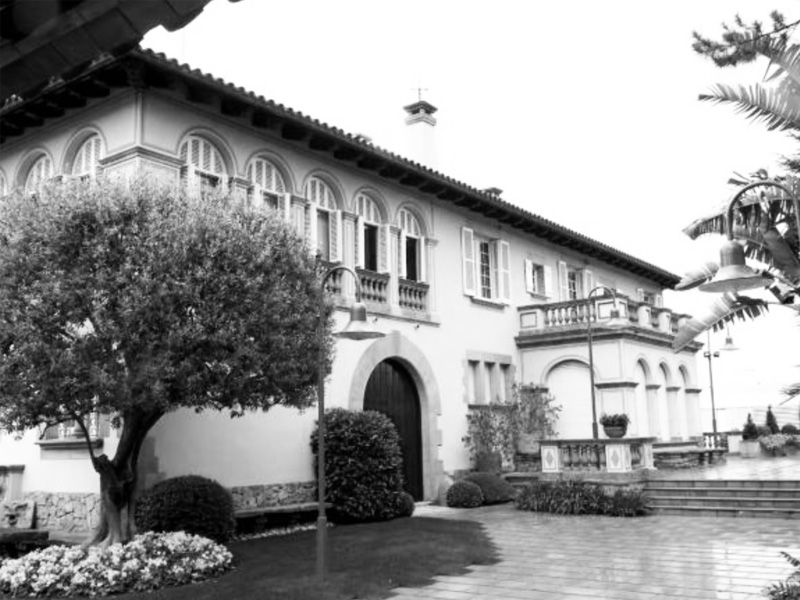Refraction or prescription
31/03/2025

20/07/2018
In 1925, Dr. Ignacio Barraquer commissioned architect Joaquim Lloret to build a manor house on land that he had purchased on Avenida Pearson. Back then it was a sparsely populated area in the Pedralbes neighbourhood, the former municipality of Sarrià, on the outskirts of Barcelona.
The Avenue opened out onto land formerly owned by the Dominican religious order and belonged to the 17th century estate of Santa Caterina. Due to the 1836 Ecclesiastical Confiscation of Mendizábal, a lot of land owned by the Catholic Church in Spain was auctioned off, so the Dominicans lost the property. In 1842, the estate was acquired by Francesc Buxó Oliana. His sons, the Buxó Font brothers, opened the Avenue after the Sarrià Town Council approved the urban development process in 1904, the aim of which was to provide better access to the San Pedro Mártir hill via a gently undulating path.
In 1915, a decision was made to dedicate the Avenue to the American electrical engineer Frederick Stark Pearson whose companies, including Barcelona Traction, Light and Power Company Limited (The Canadian), provided electrification to Catalonia and hoped to build a dam system in the Pyrenees that would generate electricity to increase the production of Catalan industries and enhance the well-being of Barcelona’s families.
In October 1918, San Pedro Mártir Sociedad Anónima, a public limited company, was established. It acquired the land from the Buxó brothers to erect a Garden City for the middle-class. The Company stuck to the Buxó brothers’ urban plan and they began to develop the area.
Thus, the first proprietors of Avenue Pearson took up residence. The houses were either their permanent or seconds homes.
By then the wave of modernist fever had passed and the more classical traditions had made a comeback. The towers adhere to the aesthetics of Noucentisme, be it the more neoclassical approach, French Beaux Arts or traditional masia, as is the case with the Barraquer residence which goes by that name precisely: "La Masía”. The houses had a garden and they had to be built 15 metres from the road. It was recommended that all housing projects be carried out by the new generation of young architects.
The first people to take up residence were:
- Josep de Sentmenat, director of the San Pedro Mártir company, who, in 1918, built the existing tower on number 28, which is currently building C of the Instituto de Estudios Superiores de la Empresa (IESE Business School).
- Dr. Narcís Serrallach Mauri moved into a tower built from 1919 to 1921.
- The Baron of Güell, Juan José Ferrer-Vidal Güell, also a member of the board of directors of the San Pedro Mártir company, requested a pavilion in 1920.
- Banker, Vicente Muntadas Rovira, manager of Banco Vitalicio and director of Caja de Previsión y Socorro bank moved into the current number 30. It’s a tower built by architect Eusebi Bona, who would later be commissioned by the Güell family to design the next Royal Palace of Pedralbes.
- German textile industrialist, Mauricio Heymann.
In 1921, Sarrià became annexed to Barcelona and the new building permits remained valid, however they were approved by the new city council.
- In the same year, Joaquim Lloret, the architect behind the Barraquer tower, built Villa Eulalia for Luis Abadal Oliveras, an industrialist.
- In 1922, Jaume Balet Viñas took up residence in numbers 8-10. This member of the Balet family would subsequently buy 6000m2 of land from Joan Antoni Güell López, president of the public limited company that had converted the Torre Santa Catalina into Torre Güell, where he would open a restaurant (1927) beside the Font del Lleó (Lion Fountain), a fountain with a sculpture of a lion, on the land of Santa Caterina. This restaurant generated plenty of buzz in the area.
- In 1923, J. Ramoneda built numbers 14-16, a picturesque house, on the corner of Abadesa Olzet.
- Finally, in 1925, Dr. Barraquer planned his house, which was completed in 1927; a building combining the Catalan masia and the English mansion, but we will leave it for another occasion.